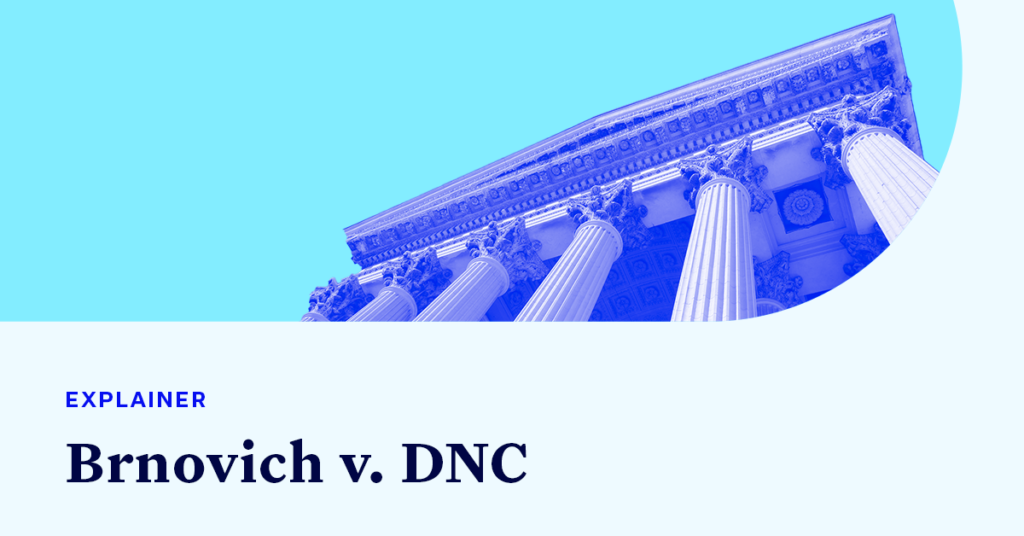What’s Next for Voting Rights After Brnovich?

Last Thursday, the conservative majority on the U.S. Supreme Court upheld two different Arizona voter suppression laws. The six conservative justices ruled in Brnovich v. Democratic National Committee that the laws before the court, which severely limit ballot collection and reject all out-of-precinct ballots, do not violate Section 2 of the Voting Rights Act (VRA). While this decision upholds laws that disproportionately impact Arizona’s Native American, Hispanic and African American citizens by unduly burdening their right to vote and limiting their access to the ballot box, the Supreme Court did not take the drastic step of striking down Section 2 of the VRA.
More specifically, Section 2 of the VRA prohibits any voting law or practice that results in the “denial or abridgement of the right of any citizen of the United States to vote on account of race or color.” Section 2 provides a mechanism for challenging laws that were enacted with a discriminatory purpose or have a discriminatory impact. These two prongs are often referred to as the intent test and the results test. Brnovich focused mostly on the results test — whether the two Arizona laws mandating the “time, place, or manner” of elections resulted in a “denial or abridgement of the right of any citizen of the United States to vote on account of race or color.”
In finding that neither law violates Section 2, Justice Samuel Alito diminished the power behind the provision by providing a narrow list of “guideposts” to determine if a law has a discriminatory result. Alito wrote that “some disparity in impact does not necessarily mean that a system is not equally open or that it does not give everyone an equal opportunity to vote” — meaning that just because a law disproportionately burdens one minority group does not necessarily mean it is unlawful. Alito also mentioned the size of the burden imposed, the similarity of the law to 1982-era voting laws, other voting opportunities and the state’s interest in regulating elections as other factors to consider. These “guideposts” will make it harder to successfully bring challenges to laws that set the time, place and manner of elections under the results prong of Section 2.
It is important to note that the vast majority of voting rights cases are brought under constitutional claims, such as the First, 14th, 15th or 26th Amendments, and the ruling in Brnovich does not impact constitutional challenges to voting laws.
Similarly, this ruling does not greatly affect lawsuits, such as the U.S. Department of Justice’s recent lawsuit in Georgia, that bring Section 2 claims alleging racially discriminatory intent. The majority in Brnovich found that the 9th U.S. Circuit Court of Appeals had failed to defer to the trial court’s finding of facts and therefore overturned the 9th Circuit’s holding that Arizona’s ballot collection ban was enacted with a discriminatory purpose because the trial court’s determination was not “clear error.”
The ruling in Brnovich limits an already weakened VRA, but lawsuits can and will still be brought to protect voting rights. While the fight to protect voting rights in courts will continue, passing federal legislation is a crucial step to safeguard our democracy.